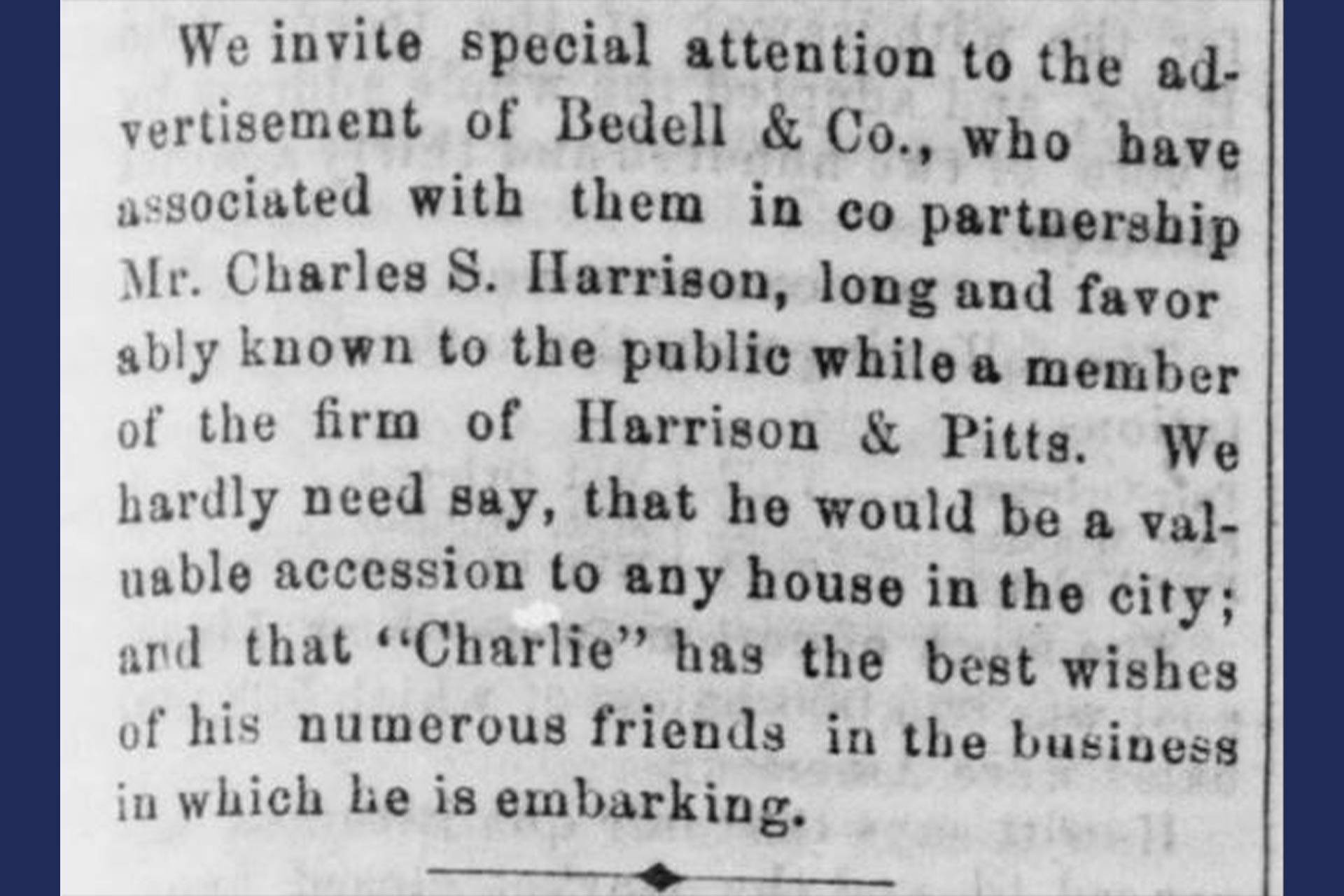Markets, mirrors, and windows in time: a feminist approach to the importance of women and children in the Columbus, Georgia slave trade - part 2
Posted on: 19 August 2024 by Melissa Jeannot in Posts

In the days leading up to 23 August, International Day for the Remembrance of the Slave Trade, we will post each part of a three-part series by Melissa Jeannot. This blog series explores the complexities of the slave trade in Columbus, Georgia.
In the first part of our series, we explored the realities of the slave market in Columbus, Georgia, where women and children were commodified and traded for profit. As we continue our exploration in this second blog, we shift our focus to the mirror...
Part 2 - The Mirror
The mirror I am referring to is the mirroring of behaviour in these slave trader’s professional and personal lives. Slavery as an institution was constructed through the patriarchy and relied on tools of abuse and oppression to further the profits and capital gains of white men. Toni Morrison describes in her book A Mercy that slavery was built on concepts like patriarchy and capitalism; characteristics that still very much govern American society today (Love, 2010).
Social status and wealth
Social status and wealth played huge factors in the slave trading business. It was first believed that slave traders were outcasts and lone travellers rejected by society for their unsavoury and immoral work, but Michael Tadman finds abundant evidence supporting a different claim. Tadman argues that most traders were men of wealth and good social standing, who needed extensive capital and a long list of wealthy white supporters (Tadman, 1996 and 2007).
I found Tadman’s claims to be true in my own research of the Columbus traders. With the editors of Columbus newspapers often enthusiastically endorsing the characters and business ventures of these men (Carey, 2011).
Looking back to Columbus during this time, most of these men were well off and respected. A. K. Ayer and George L. Pitts of Harrison & Pitts even served terms as council aldermen in Columbus, Georgia (“History of Columbus, GA”, 2015; “Proceedings of Council”, The corner stone, February 4,1857).
Further, the McGehee family was one of the most prominent in Columbus at the time, and their high social standing led to access of wealth and business opportunities for all the McGehee men.
Marriages and social connections
These men knew they needed strong social connections with their communities to allow them to increase their financial gains and stay consistent in lucrative business endeavors, and they used their own women and children to do so.
With the power of familial ties these men formed strong alliances with each other and businesses through the marrying of sisters, and the pairing of children. Samuel J. Hatcher of Hatcher & McGehee was married to Elizabeth (McGehee) Hatcher, the sister of A. C. McGehee of Hatcher & McGehee. The McGehee family was very good at placing a marriage where it suited them most. The Columbus Enquirer, which fiercely supported Hatcher & McGehee, was published by Mirabeau B. Lamar, who was the brother of Louisa Elizabeth (Lamar) McGehee.
If Lamar sounds familiar it is also the family of Col. C. A. L. Lamar who was the joint owner of the slave ship “Wanderer” which would illegally bring slaves from Africa after the transatlantic slave trade was banned (Flanders, 1933). A. C. McGehee was known to have sold some of the enslave people illegally brought on the “Wanderer” and may have contributed more than we know to the continuation of smuggling Africans into America (Greene, 2022).

Image above: Ayer Family and Business Connections. Jeannot, M (2024). Produced by Canva.
The men in the Columbus slave trade were highly respected members of their society and improved their social standings through marriages and strong familial ties to allow them to gain access to more wealth, power and influence in Georgia.
Their women were bartered, and children bred for business and capital gain to climb ever higher in their social rankings. Their rivalries never crossed boundaries in ways that could hurt the business overall, as each trader had some form of connection or past partnership (either a marriage or dissolved business partnership).
It is important I think to note that almost every one of these men worked with more than one of their ‘rivals’; Ayer worked with Harrison up until 1854, after that Harrison worked with McGehee until 1857, and Pitts used to work with Hatcher until they formed their separate businesses, Harrison & Pitts and Hatcher & McGehee in 1857.

Image above: McGehee Family and Business Connections. Jeannot, M (2024). Produced by Canva.
First image is a newspaper clipping from “Local Affairs”.
In the third and final part, The Window, we will explore glimpses of the past that survive in historical records.
Keywords: Slave trade, History, History Blog, USA.